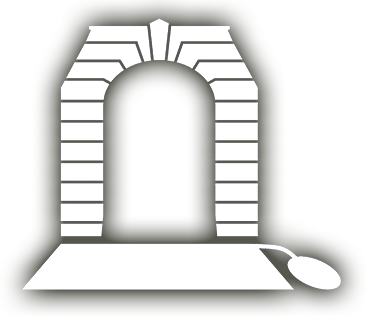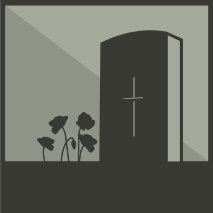MOSS, Richard George
| Service Numbers: | Not yet discovered |
|---|---|
| Enlisted: | Not yet discovered |
| Last Rank: | Not yet discovered |
| Last Unit: | 23rd Infantry Battalion |
| Born: | Not yet discovered |
| Home Town: | Not yet discovered |
| Schooling: | Not yet discovered |
| Occupation: | Not yet discovered |
| Memorials: |
World War 1 Service
| 7 Mar 1916: | Involvement 23rd Infantry Battalion, --- :embarkation_roll: roll_number: '14' embarkation_place: Melbourne embarkation_ship: HMAT Wiltshire embarkation_ship_number: A18 public_note: '' | |
|---|---|---|
| 7 Mar 1916: | Embarked 23rd Infantry Battalion, HMAT Wiltshire, Melbourne |
Constable Richard George Moss 5814
Police Station, Bairnsdale, Victoria
Increasing the population of Bena, a farming district south of Korumburra, on 16 July 1892, Jacob Moss and Ellen Cox, welcomed with love Richard George Moss. Their second child, Richard was merely 12 months junior to their daughter, Bena born Annie Florence. Two years forward, the small family welcomed second son, Albert Edward at Loch, however a further three years witnessed the Brunswick, Melbourne registration of second daughter, Ivy Mary.
Receiving his education at Murchison State School, Richard Moss, a labourer by occupation, was appointed to the Victoria Police Force on 4 September 1912, where his place of birth was recorded as being Jeetho, Victoria, also a farming district south of Korumburra, from the aboriginal meaning to go away or be free.
Commencing, on 1 November 1912, foot patrol duty from Russell Street Police Station, on 3 December 1912, Richard Moss transferred to Fitzroy. Sergeant Malcolm Grant, in his “They served in blue, khaki and blue” informs us –
“It was at Fitzroy that Constable Moss had what can only be euphemistically termed, the start of his troubles. He was charged, in July 1914, with ‘gossiping on duty’ and in October for ‘being absent from barracks without leave [for one hour and ten minutes].’
“A further charge of a more serious nature was given on 28 December 1914 – ‘making an appointment with a married woman, etc., which amounted to conduct injurious to the public peace or welfare. For this last matter a fine of £3 [$6] was applied and the Chief Commissioner approved a transfer to the country.”
Chief Commissioner Sainsbury, on 1 February 1915, effected the Bairnsdale transfer ‘for the good of the service’. Twenty-three years of age, Constable Richard George Moss 5814 resigned from the Victoria Police Force on 20 May 1915, having six days earlier at Bairnsdale, completed an Attestation Paper to serve until the end of World War I.
Citing his sister, Annie Florence, of 74 Harris Street, North Melbourne, as next of kin, 176.3 cm [5’ 9½”] 87.5 kg [13 st. 11 lb.], Richard Moss, impressively, on 14 May 1915, became a Second Lieutenant with 23rd Battalion, 10th Reinforcement, attending, during the initial four months of service, the Officers’ Course, Seymour, Victoria.
Raised in Victoria in March 1915, as the third battalion of the 6th Brigade, the 23rd Battalion, following initial training, departed Australia in March, arriving in Egypt to complete advanced training, in June.
As part of the 2nd Australian Division, the 6th Brigade landed at ANZAC Cove in early September, with the 23rd Battalion soon manning one of the most trying parts of the Anzac front line - Lone Pine. The fighting being highly dangerous and exhausting, the battalions were relieved every day, alternating with the 24th Battalion, the 23rd manned Lone Pine, until the December 1915 evacuation.
Embarking from Melbourne, Victoria, on board HMAT A18 Wiltshire on 7 March 1916, the 23rd Battalion 10th Reinforcement disembarked, on 26 May 1915, at Marseilles, France.
The battalion was next "in the line" on 10 April 1916, when it occupied forward trenches of the Armentieres sector in northern France. This relatively gentle introduction to the Western Front was followed in July by the horrific battles of Pozieres and Mouquet Farm, after which it was estimated that the Battalion lost almost 90 per cent of its original members.
After manning the front line, throughout the bleak winter of 1916-17, the battalion's next trial came at the second battle of Bullecourt in May. After the failure of the first attempt to capture this town, by troops of the 4th Australian Division, this new attack was heavily rehearsed. The 23rd Battalion succeeded in capturing all of its objectives, and holding them until relieved, but, subjected to heavy counter-attacks, the first day of this battle was the battalion's single most costly of the war.
Formed, on 6 June 1916, at La Motte, France, the 1st Anzac Entrenching Battalion, initially was utilised to accelerate, as well as improve, training of reinforcement infantrymen upon completion of extended training conducted in England and France. Providing exposure to combat conditions whilst undertaking engineering works near the front line. However, as part of the response of heavy casualties suffered by Australian units in the Battle of Pozières, between July and September 1916, its personnel was posted to combat companies. Second Lieutenant Richard Moss, on 15 July 1916, was taken on strength of 1st Anzac Entrenching Battalion.
At Poziéres, France, on 4 August 1916, Second Lieutenant Richard Moss received a gunshot wound to his upper right forearm, his gallantry, during the Battle of Pozières, being recognised, on 15 September 1916, by his being recommended for the Military Cross
“For excellent work on the attack on Pozieres Ridge on 28-29 July 1916, in carrying out entrenching work under heavy fire, and also for plucky reconnaissance work up to the enemy trenches. His conduct under heavy enemy fire has been cool and steadfast”
Ultimately, the recommendation was not acted upon.
Hospitalised, during August 1916, in England, on 20 September 1916, Richard Moss was promoted Lieutenant. Appearing, on 21 September 1916, at London, England, before an Army Medical Board regarding a gunshot wound to his right forearm – ‘with the exception of some occasional slight swelling at the scar, he has no trouble with the wound; and he is in robust health’
Returning, on 24 September 1916, Richard Moss served in Belgium until, on 31 December 1916, he was seconded to 6 Training Battalion, England. Returning to Belgium, Richard Moss was involved in the advance on Bapaume and Bullecourt following the German retreat to the Hindenburg Line. Advancing across no-man’s land; constructing a light railway for the conveyance of stores to Baupaume during the advance; occupying Bapaume on 17 March 1917.
Two months following, on 25 May 1917, Second Lieutenant Richard Moss achieved promotion to Captain. His gallantry, during this period of time, reflected in his being recommended, on 19 September 1917 to be Mentioned in dispatches [MiD]
“For conspicuous gallantry and devotion to duty, in the advance from Bapaume to Norbuele, this Officer [Second Lieutenant Richard George Moss] had charge of a company, and during the whole time he was in the line he showed absolute fearlessness in leading and encouraging his men. He has at all times shown great dash and determination.”
Confirmation being recorded in Commonwealth of Australia Gazette 18 April 1918 entry at page 843, position 155. London Gazette 28 December 1917 entry at page 13566, position 79.
To be mentioned in dispatches [MiD], a member of the armed forces, whose name appears in an official report written by a superior officer and sent to the high command, has their gallant or meritorious action in the face of the enemy described. In recognition of this honour, Captain Richard George Moss, later wore a spray of oak leaves in bronze on the ribbon of his Victory Medal.
Late in 1917 the battalion moved, together with the remainder of the AIF, to the Ypres sector in Belgium, participating, in October 1917, in the battle to secure Broodseinde Ridge.
Between 21 March and 5 April 1918, the German Imperial Army mounted the Spring Offensive, driving British forces west towards Amiens. By comparison with the preceding three years of trench warfare, the action was fast-moving. The Germans swept speedily across the old 1916 Somme battlefield and the broad uplands to the south of the Somme.
The heaviest fighting for Australians was around Villers-Bretonneux. The Germans nearly captured the town on 4 April however a combination of weariness, together with an aggressive attack by Australian and British troops prevented German success.
Occurring on 4 July 1918, the largely Australian-planned Battle of Hamel achieved a stunning victory at minimal casualties. In the early morning of 4 July, three Australian infantry brigades (the 4th, 6th and 11th) attacked the village of Le Hamel near Amiens. The date, American Independence Day, was chosen specifically to mark the first time Americans joined Australians in battle. Together with attached platoons of American troops and a British tank brigade of 60 tanks, and supported by artillery fire from over 600 guns, the Australians captured the village. The attack was a limited action, aimed at merely straightening a section of the front line in preparation for future operations. But its true value was found in the cutting-edge combination of newly evolved techniques of silently registering artillery and the coordinated deployment of massed tanks, aircraft and infantry within a protective artillery barrage.
The commander of the Australian Corps, Lieutenant General Sir John Monash, planned the assault meticulously, estimating it would take 90 minutes to capture the key objectives. In fact, the victory took just 93 minutes and resulted in over 2,000 German casualties [including 1,600 taken prisoner] at the cost of some 1,400 allied casualties, making this one of the rare occasions in the First World War when an attack proved cheaper than defence. Two Australian soldiers, Lance Corporal Thomas Axford and Private Henry Dalziel, were awarded Victoria Crosses for conspicuous bravery in the battle.
During the remainder of April 1918, the 23rd assisted in turning the German spring offensive, participating in the battles that marked the beginning of Germany's defeat - Hamel, Amiens and Mont St Quentin. The fighting for Mont St Quentin resulted in the battalion's only Victoria Cross, awarded to Private Robert Mactier.
During this campaign, on 8 July 1918, Captain Richard George Moss was recommended for the Military Cross
“Near Villers Bretonneux on 4 July 1918 this officer commanded his company in the attack with determination.
“In the face of heavy enemy opposition, he led, at one point, portion of his command and filled up a gap, causing the enemy to withdraw.
“Meeting strong opposition, by skilful handling of his company, he overcame the enemy and captured 60 prisoners.
“During the consolidation of the final objective, he made a daylight reconnaissance 200 yards ahead, although continually fired at by enemy machine guns and snipers, and moved part of his line to a more commanding position.
“He displayed great courage and initiative.”
Ultimately, the awarding of a Military Medal to Captain Richard George Moss was recorded in the Commonwealth of Australia Gazette 12 February 1919 at page 266, position 6, as well as London Gazette 24 September 1918 entry at page 11318, position 13.
Wounded in action, on 1 September 1918, sustaining a gunshot wound to his left calf, Captain Richard Moss was, on 8 October 1918, released from hospital.
Citing his occupation as a sheep farmer, 27 years of age, Richard George Moss, on 14 September 1919, married in London, England, 24 years of age spinster Hilda Greenberg in the Jewish religion.
Fighting its final battle, around the town of Beaurevoir, between 3 and 4 October, the 23rd Battalion departed the Western Front the following night, resting as the armistice was declared on 11 November. The 23rd Battalion disbanded in Belgium on 30 April 1919.
Returning to Australia, on 2 December 1919, following his commercial training course attendance in England, Captain Richard George Moss was appointed, on 1 January 1920, to the Reserve of Officers, prior to being, on 22 March 1920, demobilised.
Recalled, on 1 March 1921, to take command of 2/37th Battalion until 31 March 1921, in the absence of the commanding officer, as well as 13 July -13 October 1921, to be Administering Commanding Officer of the 37th Battalion.
Residing, in 1923, at Hazelhurst, Malvern Road, East Malvern, manufacturer Richard Moss operated Nojee Slipper Company, whilst remaining on the Reserve of Officers.
Promoted, on 5 October 1925, Major, three years following, between 10 January – 9 July 1928, Richard Moss was Administering Commanding Officer 37th Battalion.
Promoted, on 1 August 1928, Lieutenant Colonel, Richard Moss was Commanding Officer 37th Battalion; on 1 July 1930, he was appointed Commanding Officer 37/52nd Battalion, returning to the Unattached List on 1 July 1936.
Appointed, on 20 August 1940, Commanding Officer 57/60th Battalion, Richard performed that function between 20 August 1940 - 23 May 1942.
Considered “a strong character; a slow and not always a logical thinker; inclined to be dogmatic; Lieutenant Colonel Richard Moss, although possessed of fair knowledge of all arms, however, found difficulty in adjusting himself to modern conditions therefore making him unsuitable for field command,’
Assuming, on 31 October 1941, full time duty, on 15 December 1941, Lieutenant Colonel Richard Moss was appointed administering commanding officer, Recruit Reception Depot, Headquarters #6 [Melbourne].
Appointed, on 18 March 1942, commanding officer 15th Training battalion, on 22 May 1942, Lieutenant Colonel Richard Moss, relinquished command of 57/60th Battalion to be placed on the Reserve of Officers.
Resuming his private occupation, manufacturer, 70 years of age, Richard George Moss, of East Malvern, died on 20 January 1963, his cremated remains scattered at Springvale Botanical Cemetery. Seventy-five years of age, Hilda Moss née Greenberg, passed away, in 1966, at Malvern East, Victoria. The couple shared one registered child, 1920 Armadale, Victoria born Betty Victoria Moss.
Submitted 6 July 2022 by GRANT BEASLEY







